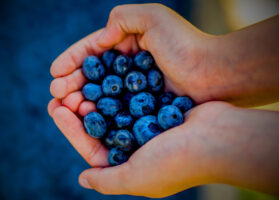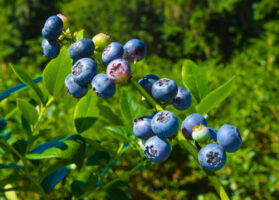Agronometrics in Charts: Mango Prices Escalate Amidst Decreasing Volumes From South America
In this installment of the ‘Agronometrics In Charts’ series, Sarah Ilyas studies the state of the mango market in the US. Each week the series looks at a different horticultural commodity, focusing on a specific origin or topic visualizing the market factors that are driving change.
Mango supplies are currently tight, and as a consequence of the heightened demand for the limited volumes, pricing has surged significantly compared to the same period last year. Around three weeks ago, prices on the East Coast ranged between $8 and $9. Currently they stand at $14,” notes Jesse Garcia of LA Produce Distributors. After incorporating the expenses associated with transporting the fruit to the West Coast, pricing is approaching the range of $17 to $18. Below we take a look at how the mango season is faring across key mango producing regions in South America.

Source: USDA Market News via Agronometrics.
(Agronometrics users can view this chart with live updates here)

Source: USDA Market News via Agronometrics.
(Agronometrics users can view this chart with live updates here)
Brazil
“The mango market is a global one, with countries affecting each other. For example, there’s currently tremendous demand from the United States for Brazilian mangoes. Because of the weather, fewer mangoes are coming from Ecuador, so they’re paying good money for mangoes from Brazil. Everyone knows Peru is starting later this year and has fewer mangoes. Brazil is, thus, alone in the market until at least mid-December. Prices should, therefore, stay good,” says Henk, an industry source.
Brazil has experienced some volume disruptions this season due to adverse weather conditions, and is currently supplying red mangoes to East Coast shippers in the United States, although the available volume falls short of the demand. “As a result, the market has exhibited double-digit pricing for the past few weeks, and this trend is expected to persist until Ecuador’s mango season commences.” Garcia notes. The fruit quality is currently somewhat suboptimal, a circumstance attributed to the prevailing weather challenges.

Source: USDA Market News via Agronometrics.
(Agronometrics users can view this chart with live updates here)
Ecuador
The mango season appears grim for Ecuadorian mango producers, who are expected to face a substantial 65-75% reduction in volumes due to the El Niño phenomenon. Traditionally, the Ecuadorian mango season commences in mid to late September with yellow varieties, followed by Tommy Atkins in October, and concluding with Kent and Keitt in November and December.
Bernardo Malo, President of the Mango Foundation of Ecuador, which represents 97% of the country’s producers, packers, and shippers, attributes the challenge to unusually high temperatures during flowering, along with unexpected late rains in May and June. In addition to lower expected volumes, producers face the threat of early winter rains towards the year’s end, jeopardizing harvest logistics and fruit quality. The extent of the reduction will depend on the timing of the rainfall, but the sector anticipates a significant decrease in yield.

Source: USDA Market News via Agronometrics.
(Agronometrics users can view this chart with live updates here)
Costa Rica
Costa Rican fruit is gradually entering the market, although its season does not formally commence until November-December. Costa Rica’s contribution to the market remains relatively modest, and therefore, it exerts minimal influence on the overall dynamics. Consequently, it is conceivable that Brazil, which typically sustains mango availability through the early months of the year, may extend its presence in the market, especially in light of Ecuador’s reduced crop yield.

Source: USDA Market News via Agronometrics.
(Agronometrics users can view this chart with live updates here)
Peru
Adverse weather conditions have significantly impacted Peruvian mango cultivation. Mango plantations, along with other crops, have suffered the consequences of heavy rainfall, leading to exceptionally high humidity. Coupled with this, elevated temperatures exceeding the 20-year average by 2 to 3 degrees, attributed to the Niño Costero phenomenon, have further exacerbated the situation. These two factors have collectively resulted in a meager flowering for the 2023-2024 crop.
The field reports suggest a flowering rate ranging from a mere 10% to 30%, indicating a notable reduction in production for the 2023-2024 season. This season is projected to be delayed, with anticipated commencement in November or December, potentially shortening its duration.
The estimated Peruvian mango production for the 2023-2024 season stands at 250,000 tons, representing just half of the previous campaign’s yield, which reached 500,000 tons. The mango industry faces an additional layer of uncertainty contingent upon the presence or absence of rain, which could have significant repercussions. Without rain, the outlook is one of limited production, while the occurrence of rain could lead to heightened challenges, including phytosanitary issues due to increased temperature and humidity. This could result in attacks from pathogenic elements such as anthracnose, fruit flies, and red spiders.
Moreover, the logistical aspects of mango production may be hindered, with the potential for flooding and road collapse during heavy rains.

Source: USDA Market News via Agronometrics.
(Agronometrics users can view this chart with live updates here)

Source: USDA Market News via Agronometrics.
(Agronometrics users can view this chart with live updates here)
In our ‘In Charts’ series, we work to tell some of the stories that are moving the industry. Feel free to take a look at the other articles by clicking here.
All pricing for domestic US produce represents the spot market at Shipping Point (i.e. packing house/climate controlled warehouse, etc.). For imported fruit, the pricing data represents the spot market at Port of Entry.
You can keep track of the markets daily through Agronometrics, a data visualization tool built to help the industry make sense of the huge amounts of data that professionals need to access to make informed decisions. If you found the information and the charts from this article useful, feel free to visit us at www.agronometrics.com where you can easily access these same graphs, or explore the other 21 commodities we currently track.
Written by: Sarah Ilyas






